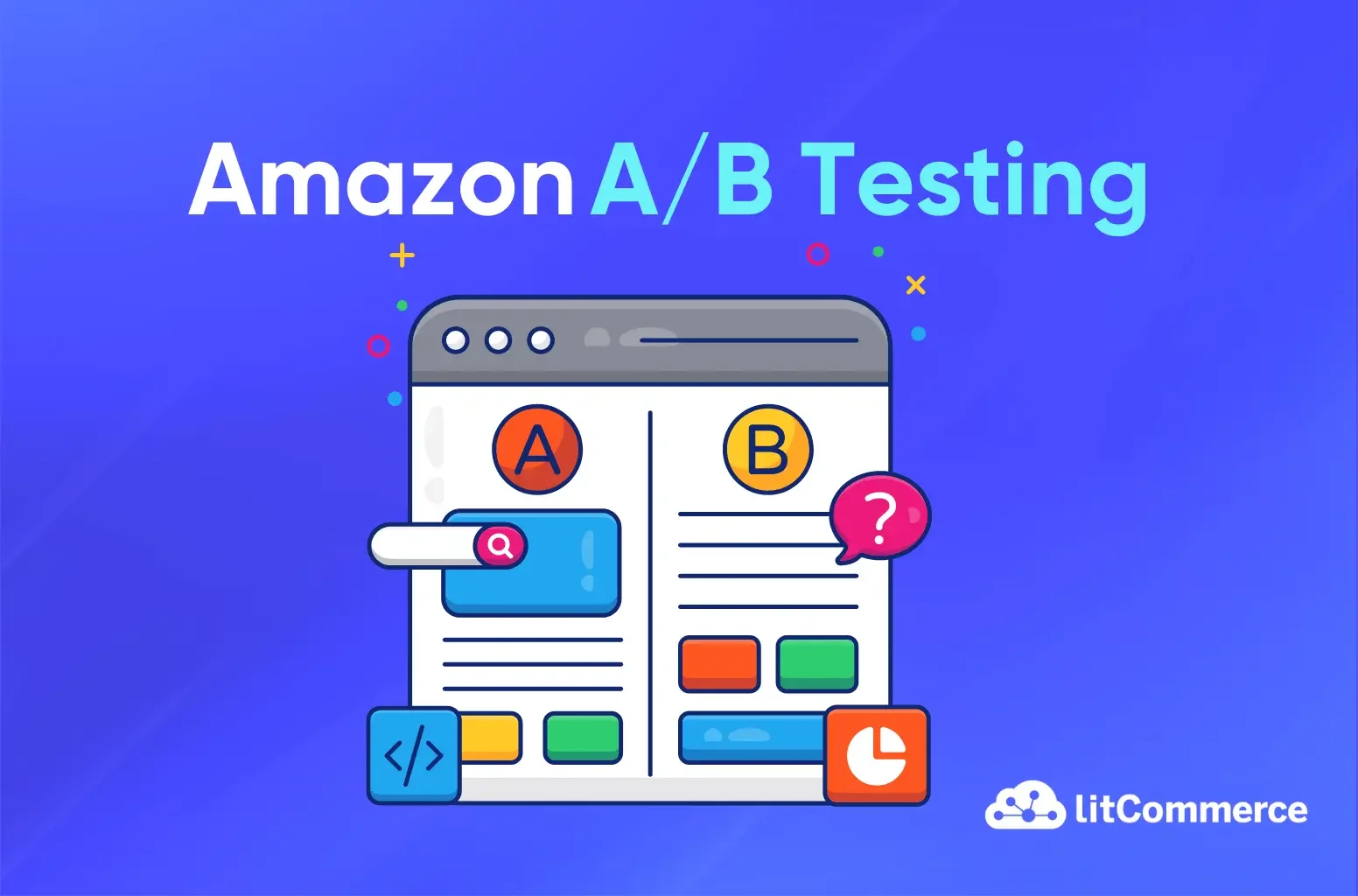As an Amazon seller, you’re well aware that success isn’t guaranteed by simply listing your products. In a marketplace saturated with competitors, crafting a winning strategy demands precision and continuous refinement. That’s where Amazon A/B testing comes in. Basically, running Amazon A/B testing lets you test various aspects of your listing and see which versions perform best.
In this article, we’ll explain the importance of Amazon A/B testing and the most important part is how to create and run Amazon A/B testing:
- Method 1: Applying manual split testing
- Method 2: Using the manage your experiments tool
- Method 3: Creating a poll to test your listing
Ready to tap into the remarkable potential of Amazon A/B testing? Let’s get started!
Boost Sales on Amazon and Beyond with LitCommerce
Try split-testing your Amazon listings to find top-performing listings and effortlessly expand your presence across different platforms with the LitCommerce Amazon integration tool.
What is Amazon A/B Testing?
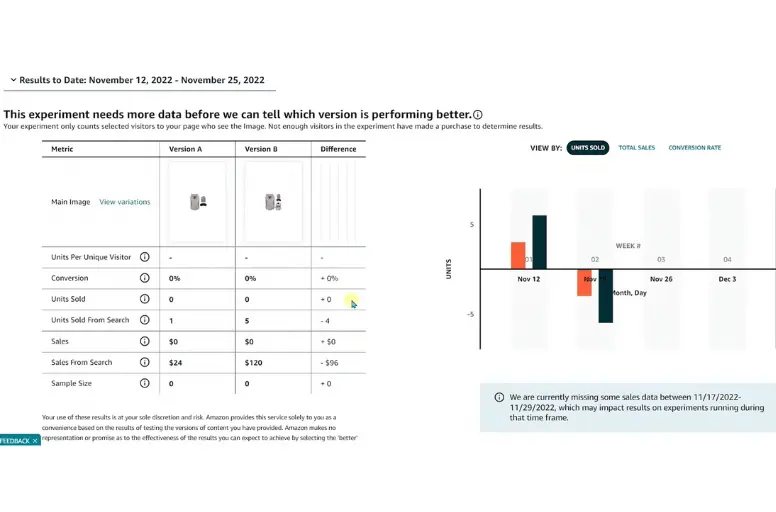
Amazon A/B testing, also known as split testing, is a technique used by Amazon sellers to improve their product listings or ads.
The aim of AB testing Amazon is to compare two or different versions of an element to see which one performs better in terms of main metrics, like click-through rates, conversion rates, etc.
For Amazon sellers, split testing can be applied to various parts of their listings:
- Product titles: You may try different titles to see which one gets more clicks and conversions.
- Product images: Amazon sellers often test different visuals to find out which ones appeal more to potential buyers.
- Product descriptions and bullet points: Experiment with wording, format, and information to see what leads to more conversions.
- Pricing: You may try out different prices to see which one results in the most sales and profit.
These elements are vital for Amazon SEO strategies as they can boost your product listing’s visibility in Amazon search results. Explore our detailed Amazon SEO guide for further insights.
Now, let’s find out why running Amazon A/B testing is important before diving into how to do it.
Why Should You Run Amazon Split Testing?
Running Amazon split testing is crucial because it helps identify what aspects of your listing can significantly boost customer traffic. Even if your conversion rate seems decent, there’s always room to improve. Without testing, you can’t be certain if your current strategies are maximizing sales or just draining your budget.
Consider a scenario of Amazon A/B testing focusing on product titles:
Let’s say you’re selling a $30 product with a 5% conversion rate using your current product title.
In the first two weeks of testing, you maintain the same title and monitor the metrics closely. After this period, you find that your product was viewed 800 times with a 5% conversion rate, resulting in $1,200 in revenue. For the subsequent two weeks, you switch the product title to an alternative option. In this phase, your product is viewed 800 times again, but now the conversion rate has increased to 7%.
As a result, you generate $1,680 in revenue. This uptick in conversion rate translates to an additional $480 in just two weeks! By simply altering the product title, you’ve effectively boosted your monthly sales potential by $960.
Now, let’s delve into the practical steps of creating and running Amazon A/B testing to implement these strategies effectively.
How to Create and Run Amazon A/B Testing?
In this part, we’ll explore 3 ways to split test products for Amazon and improve performance.
Method 1: Applying manual split testing
It may take time, but manual Amazon split testing can significantly boost your profits. To do this, try different versions of a specific part of your listing and keep track of different measures to find out which version works best.
To measure each change in your listing accurately, try changing only one thing at a time. For instance, in one month, change your titles; in the next, your images, and so on.
How to monitor metrics:
- Sign in to your Seller Central dashboard
- Navigate to Reports > Business Reports
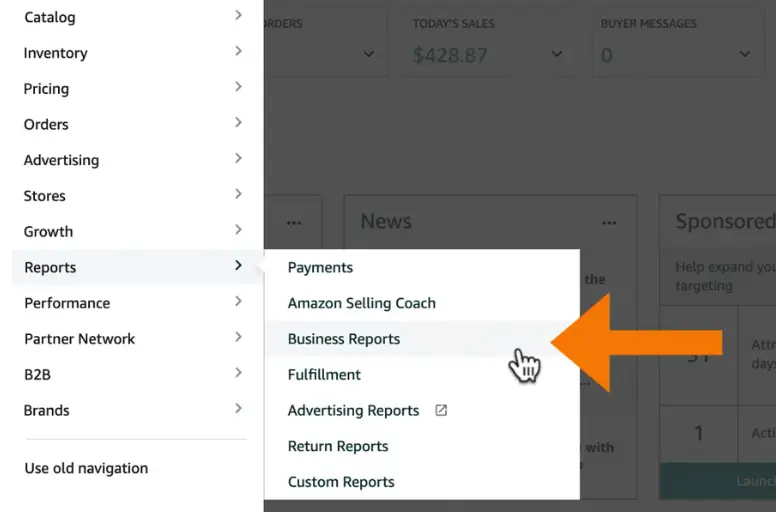
- Choose “Detail Page Sales and Traffic By Child Item” on the left-hand side. Here, you’ll find metrics like Sessions, Units Ordered, Unit Session Percentage (conversion rate), etc. Monitor this periodically to gauge your product performance.

Running the test:
When running an Amazon A/B test, let each version run for at least two weeks to gather enough data. If your sales are low, extend the test duration.
Keep a spreadsheet noting start and end dates for each version and track metrics like sessions and conversion rates.
Analyzing results:
Record your results on Google Sheets. Then, analyze the data to determine which version performed better. Basically, you should compare metrics before and after each test to gauge performance accurately.
Method 2: Using the manage your experiments tool
Amazon’s Manage Your Experiments tool is a new feature designed for brand-registered sellers only. This AB testing tool enables brands to compare two content versions simultaneously to determine which is most effective for their product.
Unlike manual split testing of Amazon products, both versions run at the same time, with Amazon randomly dividing customers into two groups: one sees Version A, and the other sees Version B. With this tool, you can also test various elements like Amazon Enhanced brand Content, Bullet Points, Product Images, and more.
To start an Amazon A/B testing using the Manage Your Experiments tool:
- Log in to your Seller Central account, go to the Brands tab > Manage Experiments

- Click on “Create a New Experiment”. Then, choose the experiment type.

- Select your product, and enter the product information. Fill in the blank in Version B for testing.
- Then, set the test duration (between 4 to 10 weeks). This range allows Amazon to gather sufficient data.
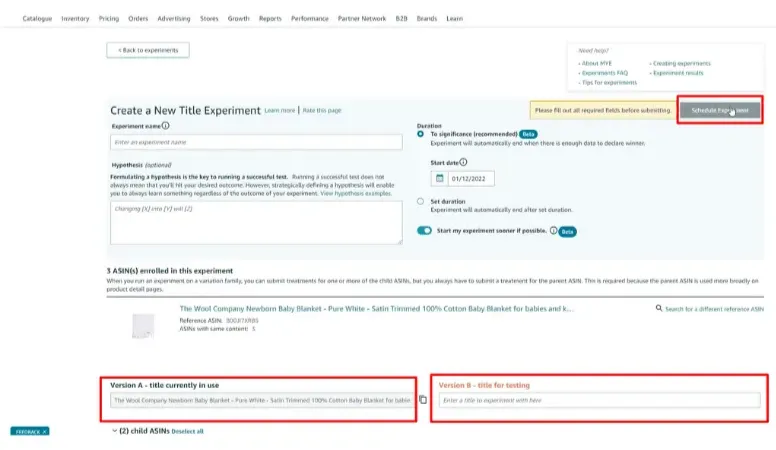
- Once set up, click on “Schedule Experiment.”
Method 3: Creating a poll
Another way to conduct Amazon testing is to poll your audience to gather feedback on their preferences. You can do this on various social media platforms like TikTok, Instagram, Facebook, or email lists.
On Instagram, for instance, you can create a carousel post with two image options and ask followers to comment “A” or “B” based on their preference. Alternatively, use the poll sticker in Instagram Stories for a quick and easy vote. Check this Amazon Product Photography to get the best one!
The advantage of social media polls is that your audience’s feedback is honest. They’ll tell you if they don’t like something, giving you valuable insights to improve your Amazon listing and boost conversions.
However, using polls may not give you accurate results because your audience’s opinions might not match those of actual buyers. Also, the people taking part in social media polls might not fully represent your target market, so the feedback could be biased.
Another Amazon A/B testing option is to use a tool like PickFu, which allows you to test images or infographics with specific audiences, including Amazon Prime members.
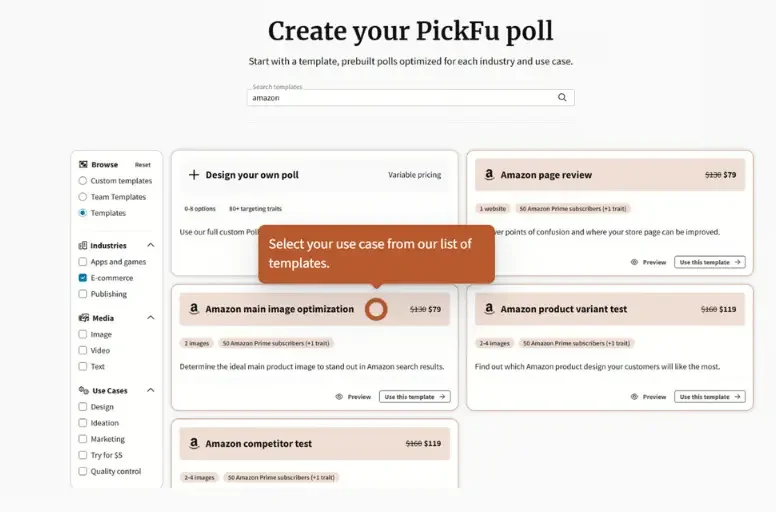
Simply ask a question like, “Which image would you click on while shopping on Amazon?” and present two options. In just an hour, you’ll receive feedback along with reasons for their choices.
What Elements Can You A/B Test on Your Amazon Listing?
As per the Amazon A10 Algorithm SEO updates, each part of your Amazon listing can impact how visible your product is and how well it sells. So, what exactly can you experiment with Amazon split testing? Let’s dive in and find out.
#1 – Product title
Your title is crucial as it’s the first thing customers see after the main image in search results. It should convey key details like size and functionality upfront to grab attention.
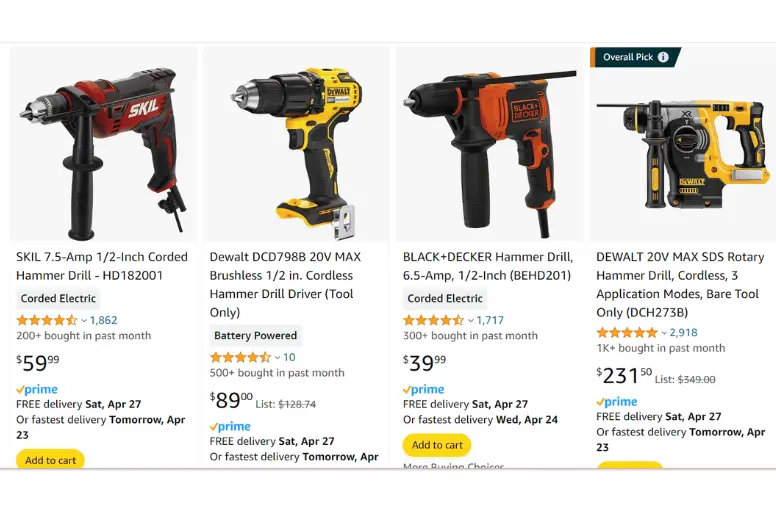
Take this image, for example. Which product would you click on? We’d click on the third one because the title mentions more information.
Usually, customers may prefer your listings over others when you provide them with the information they need.
So, when you’re Amazon A/B testing, it’s essential to experiment with different titles to see if they affect click-through and conversion rates. Just make sure to follow Amazon’s listing guidelines.
#2 – Product price
Price is a major factor influencing purchase decisions. Too high, and customers may opt for cheaper alternatives; too low, and your product may seem inferior or trigger price wars.
Pricing your product is tricky but important. When it comes to Amazon split testing for pricing, try different prices using the same method as mentioned in the manual test case previously: one price for two weeks, then another for another two weeks. Also, think about how much you’ll change the price during A/B testing, such as whether to vary prices by 5% or 10%. And keep the price that gives you the best conversion rate or sales.
#3 – Bullet points
Bullet points allow you to explain your product’s features and benefits in detail. They should be informative to tell customers what they’re buying and compelling to convince them to choose your product over competitors’.
You can run an Amazon A/B testing to experiment with different lengths and orders of bullet points. If they’re too long, customers may not read them. Try shorter versions to see if they improve your conversion rate.
#4 – Product description
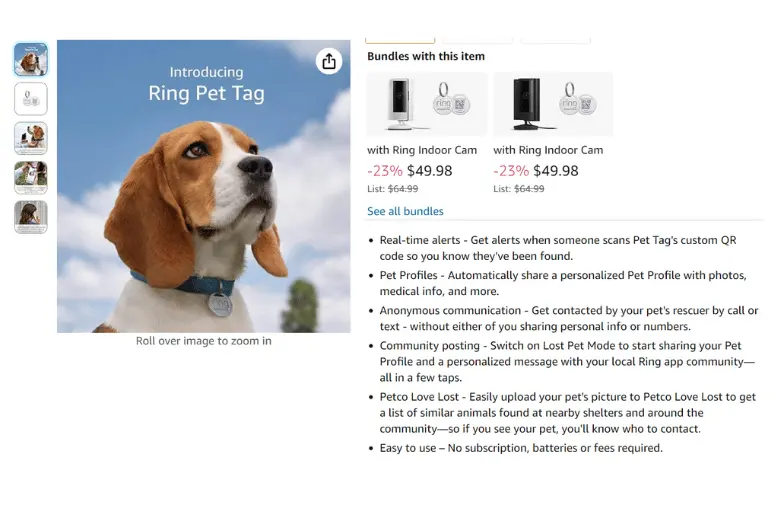
The description is the part of your listing below the fold but still affects conversions. Below the fold means it’s not visible until customers scroll down on the product page.
Amazon allows up to 2,000 characters for your description, so use it wisely. You can include detailed features and benefits, and add extra Amazon keywords you couldn’t fit in the bullet points.
With Amazon A/B testing, you can try different lengths and feature orders. Consider adding a brief brand story to see if it boosts conversions.
Even though some customers may not read this section, optimize it for search visibility as it’s the first thing customers see on the Amazon mobile app.
If you’re in the Brand Registry, you can use A+ Content instead of the old description.
While many sellers believe it increases conversions, it’s not always true. So, conduct an Amazon split testing to determine the best version for your product.
A/B Testing Amazon – FAQs
To access A/B testing in Amazon Seller Central, you can use the Manage Your Experiments tool. Here’s how to find it: An example of A/B testing Amazon might be comparing “Black Smartphone Case” (Version A) to “Durable Black Smartphone Case with Shockproof Protection” (Version B) to see which one gets more clicks and sales. They run both versions at the same time for a set period, then check metrics like clicks and sales to decide which title works best. While you can access real-time data using Amazon’s Manage Your Experiments tool, it’s best to wait at least two weeks for each test. Remember, holidays can affect results, so think about extending the test by a few weeks for better accuracy.
Ready to Run your Amazon A/B Testing?
Now you know what Amazon A/B testing is and how to do it. As you see, even a single tweak to your Amazon listing could mean losing or gaining thousands of dollars.
So, to outpace competitors and expand your business, it’s crucial to test different listing elements to ensure optimal performance and maximize sales. Otherwise, you risk missing out on potential revenue.
We believe this guide has underscored the significance of A/B testing Amazon and its potential to enhance overall performance. Now, you’re equipped to start split testing!
Got more questions about Amazon split testing? Feel free to contact us for help.

